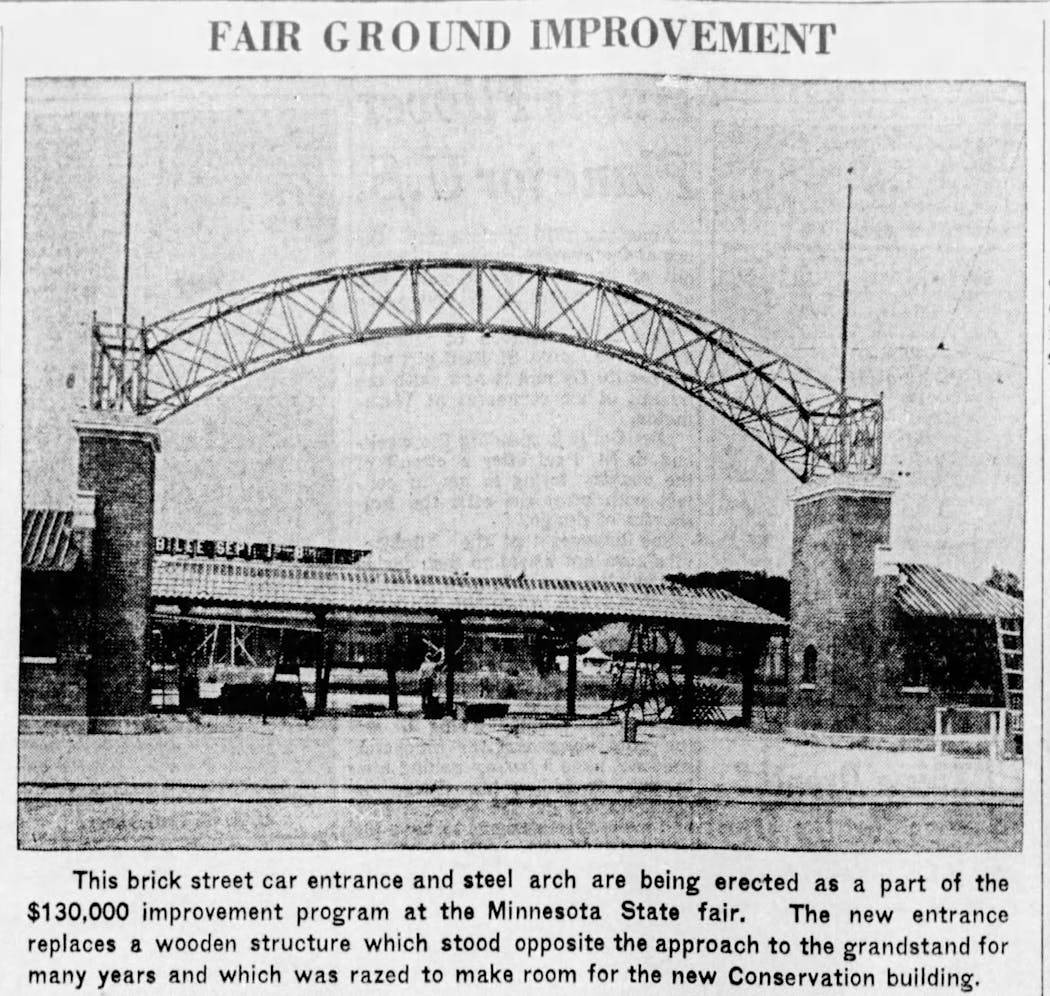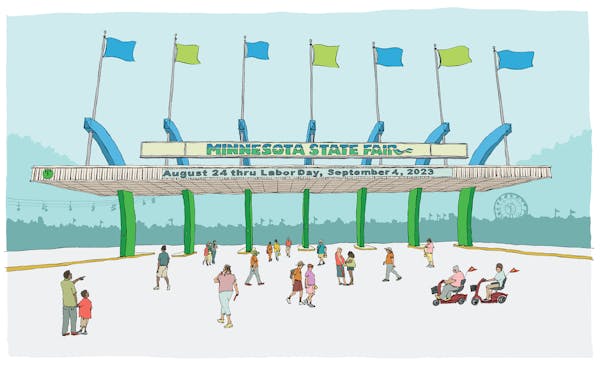How and where you enter the Minnesota State Fair depends on how you get there. If you are:
- A bus person, you arrive (rested and refreshed) at the transit hub near the West End Market, where you're greeted by flowers, a wide-open space perfect for inaugural-moment selfies, and a historic arch that once graced the trolley hub when the streetcars ran. It's nice!
2. Car person who trolls the neighborhood streets for half an hour looking for a spot, and eventually ends up doling out a double-sawbuck to leave your car on someone's lawn, you enter by the swank Jetson-esque gates on Snelling at Midway Parkway, feeling like you're stepping into a previous era when this design looked like the future. It's the classic entrance. You've done this since you were a kid.
3. Car person who gets into the lots on Como because it's close and you're a fan of congested traffic that moves like a herd of lame elephants, you enter by the underwhelming back door on Como, which feels like the servants' entrance. It doesn't matter, perhaps, because it gets you there, but it doesn't shout "Fair!"
Is there room for improvement in the fair's "entry experience"? Sure.
First, let's consider what the main entrance used to look like.
According to old maps, the original entrance was farther south on Snelling than it is today, on a long-gone street called Main Avenue. Coming through that entrance, the first thing you saw was the magnificently odd Main Building (erected in 1885, burned in 1944). It stood on the spot where the Agriculture Horticulture building stands today. You know, that green-and-white structure that looks like the customs office for the Emerald City.
The original building had four wings of brick, and an absurdly overcalled dome. It was like a cathedral for wheat and corn. The street curved around it, with Main going north, and Judson going south.
It wasn't exactly a plaza to rival the great spaces of old European cities, since there was a messy parking lot full of Tin Lizzies nearby. But the dome and the structure gave a sense of uplift and wonder, particularly if you were from a small town that lacked such big civic structures.
The current Snelling entrance (aka Gate 5) is cool, with its retro-modern flair and bright hues, but it leads to Dan Patch Avenue, which isn't exactly the Main Street of Disneyland. It's a collection of undistinguished buildings. That's fine; we're here to eat and wander and gawk. It's probably not a good idea to upgrade all the structures, because then you'd get that ersatz prefab Main Street look, and the unloveliness of the buildings is part of the honest charm.
But a statue would be nice. Something big when you enter on Snelling. A rival to the now-iconic West End State Fair sign.
Give us a massive corn dog on a plinth to make the spot as photographed as the Spoonbridge and Cherry in the Minneapolis Sculpture Garden. Or Princess Kay of the Milky Way in robes like the Statue of Liberty, holding a turkey leg instead of a torch.
Kitschy? Of course. But we need something.
The Texas State Fair has a 55-foot-high statue called, of course, Big Tex. He has greeted the state's fairgoers since 1952. When he burned in 2012, they made a new one for the next year because it wouldn't be the fair without him.
And what about the Como entrance? Its back-door approach is hampered by the attractions on the walkway in — the CHS Miracle of Birth Center and the Adventure Park. The area is hungry for improvement. And maybe some sort of welcome.
Perhaps the statue of Fairchild, the fair's longtime and often overlooked gopher mascot, could move here. Or better yet, make an even bigger statue, one so tall it can see where you parked. You might not remember, but for a bag of nuts, Fairchild II will tell you.




